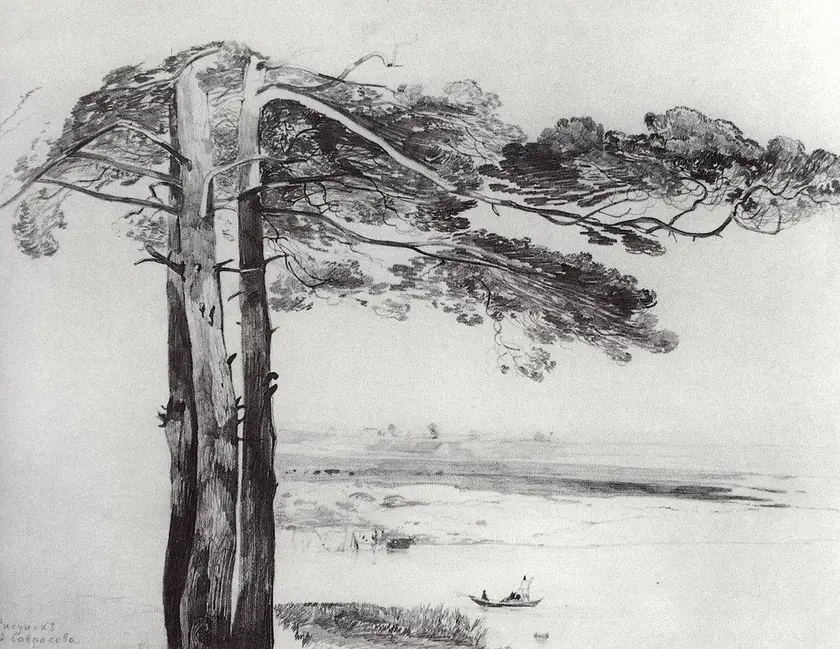Rationally logical
 Pine from Gusareva, Aleksey Savrasov, 1850
Pine from Gusareva, Aleksey Savrasov, 1850
Rationality is a virtue in the modern world. We describe it as a positive trait, and look at someone who behaves rationally with high regard. In this and the following essay I intend to explore rationality in more detail, and develop a better understanding of what it means to be rational.
Logic is an obvious place to start this analysis - a basic attempt to define rationality might be 'the application of logical thinking'.
In Zen and the art of motorcycle maintenance, Robert Pirsig provides the metaphor of analytical thinking as a knife. The knife works by dividing the world into parts - true or false, red or green, past, present or future.
The knife of logical thought operates at all levels of scale. It can be a scalpel that discerns specific features between small collections of things (the difference between burgundy and maroon red), or a giant cleaver that splits the largest categories we can conceive of (true and false) 1.
Philip Pullman points to something strikingly similar in the 'His Dark Materials' trilogy. Æsahættr, the subtle knife can cut through any material - even through into other worlds. The knife is fragile, and can only be wielded by someone who has pure intention and a clear mind.
From these metaphors, we can learn that the key part of logical thought is the ability to discern differences between things. Logic allows us to create order and better understand the world by sorting things into groups or categories.
Pirsig also suggests we can think of our surrounding context as a pile of sand. This could be the immediate physical environment we're in, or a mental context like when trying to solve a mathematical equation. Each of us only has a limited part of the world in our conscious awareness at any point - a handful of sand pulled out of a vast desert.
Another way to think about this context is as a frame. I frame a small subset of the world to reduce it to a manageable level that my logical knife can work with.
You can't split the sand arbitrarily and expect to get something useful. The value of the fracture planes we define depends on the context they are applied to. Distinguishing between a golden retriever and a great dane isn't useful to me when I'm in a room full of cats.
One way to rank divisions is to consider, across all possible contexts, how often they are relevant. The most fundamental categories are useful in the largest number of settings. Even so, there are contexts where these core categories are unhelpful and a fine grained, specific discernment is needed.
A good knife is sharp. It can perform tasks (like cutting) that can't be replicated with other tools, making it uniquely valuable. Similarly, we should aim to sharpen our mental knife. In practice, this might involve learning new techniques - such as inductive, deductive or abductive reasoning 2, or becoming better at using these methods successfully and avoiding flaws in our arguments.
There are more dissections to logic we could explore - like the distinction between formal and informal logic. However, category distinction is at the centre of logical thinking, and an understanding of this is enough to develop our sense of rationality 3. In the next essay, we'll explore the other half of rationality - reason.
A small collection in the sense that it applies to a small subset of the whole world. Different shades of red are only relevant for red colours, which are a subset of all colours, which is itself a subset of things generally.
Induction is observation first, where you come up with an idea that might explain the data based on statistics. Deduction is where you first come up with a theory and then test that with observations. Abduction also starts from observation - you try to make a sensible argument for the observations based on your existing knowledge.
Formal logic (which is commonly encountered through mathematics) can be thought of as applying an axiomatic set of pre-defined categories. These categories were (you guessed it) created by the knife of category distinction we've already explored.